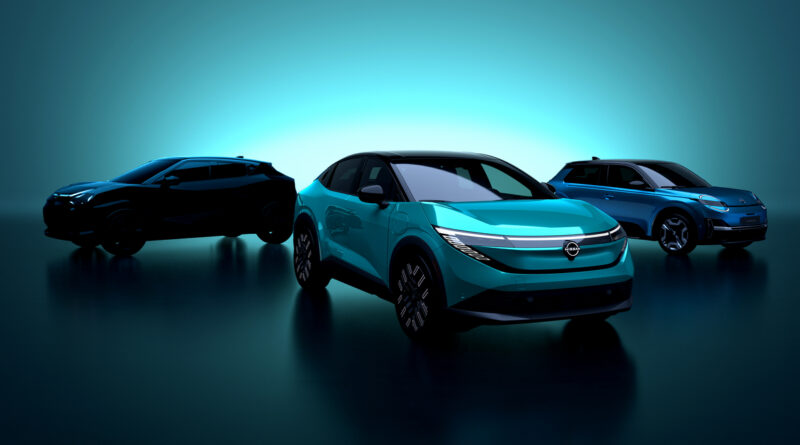
As the Australian electric vehicle (EV) market continues to accelerate, fresh details and images of the upcoming 2026 Nissan Leaf have recently emerged, setting the stage for its highly anticipated launch next year. This new iteration of Nissan’s iconic EV aims to position itself as a credible, family-friendly alternative to traditional combustion vehicles, while competing with emerging models such as the Kia EV3 and Volvo EX30.
Enhanced Efficiency and Range
Nissan is positioning the 2026 Leaf as a high-efficiency SUV particularly suited for highway driving. One of its standout features is the ability to add approximately 250 kilometres of range with just a 14-minute charge – a significant convenience for Australian drivers seeking quick, dependable refuelling options. Nissan’s Vice President of Global Product Strategy, Richard Candler, emphasises that the new Leaf is designed to facilitate easy and seamless charging, making it a practical choice for daily use and longer road trips.
While impressive, this charging speed falls slightly short of the next-generation Mercedes-Benz CLA, which can add 300 kilometres in ten minutes. However, Nissan’s focus on delivering a balance between efficiency and practicality remains clear.
Design and Aerodynamics
The 2026 Leaf’s aerodynamics have been finely tuned to enhance highway efficiency. It boasts a low drag coefficient – 0.26 for the US and Japanese markets, and an even lower 0.25 for Europe. This difference stems from variations in wheels and door mirrors, tailored to optimise range. The vehicle features several aerodynamic enhancements, including pop-out door handles, active grille shutters, and streamlined alloy wheels. Underpinning its sleek silhouette is a flat underfloor, complemented by a fastback shape creating an airfoil effect that reduces resistance and improves performance.
Interior Innovations
A highlight of the new Leaf’s interior is the panoramic glass roof, which sits 12mm lower than conventional designs, offering a spacious feel while maintaining headroom. The roof is equipped with advanced e-dimming technology, allowing occupants to effortlessly adjust transparency at the push of a button. This electrochromic feature is complemented by infrared coating, which minimizes solar heat gain and helps keep the cabin cooler – an essential feature for Australian climate conditions.
Practical and Stylish Design
Nissan’s design team, led by Nobutaka Tase, has focused on crafting a vehicle that balances emotional appeal with practical needs. “We aimed to create a sleek and bold vehicle that also meets the real-world requirements of families,” says Candler. Despite the limited footage of its later development stages, the 2026 Leaf’s overall aesthetic – including its side profile and rear styling – promises to be both modern and functional, with further details expected in future unveilings.
Conclusion
The 2026 Nissan Leaf is shaping up to be a compelling addition to Australia’s expanding EV landscape. With enhanced range, efficient aerodynamics, and thoughtful interior tech, it seeks to appeal to both families and eco-conscious drivers. While it may slightly lag behind some rivals in rapid charging speeds, Nissan’s focus on delivering a versatile, everyday EV remains clear. As the launch date approaches, Australian consumers can look forward to a vehicle that combines practicality, style, and innovative technology.
FAQs
When will the 2026 Nissan Leaf be available in Australia?
Nissan has announced that the all-new Leaf will arrive in Australia next year, with specific release dates expected to be confirmed closer to launch.
What is the expected range of the new Nissan Leaf?
The new Leaf is expected to offer approximately 250 kilometres of range on a 14-minute quick charge, making it well-suited for daily commuting and longer drives.
How does the charging speed compare to other EVs?
While the Leaf’s 14-minute charge to gain 250 km is impressive, some competitors like the Mercedes-Benz CLA can add 300 km in about 10 minutes. Nonetheless, the Leaf balances charging speed with efficiency and practicality.
What are the key design features of the 2026 Nissan Leaf?
Notable features include aerodynamically optimized elements such as pop-out door handles, active grille shutters, a panoramic glass roof with electrochromic technology, and a sleek fastback silhouette.
Will the Nissan Leaf be suitable for Australian conditions?
Yes, with its efficient design and cooling features, the Leaf aims to perform well in Australia’s diverse climate, providing a practical EV option for Australian families and commuters.
About EV Evolution
EV Evolution is the leading online platform dedicated to Australian electric vehicle owners and enthusiasts. We foster a vibrant community, delivering essential EV news and insights, and enhancing user engagement through our innovative, AI-powered chatbot for dynamic discussions. Our mission is to empower Australian electric vehicle owners and enthusiasts by fostering a vibrant, AI-driven online community that connects, informs, and advances the nation’s electric vehicle landscape.




